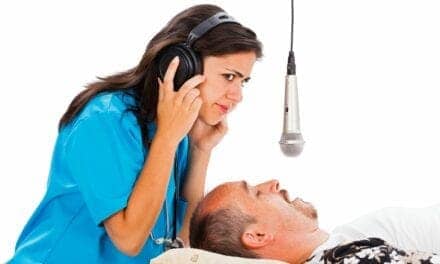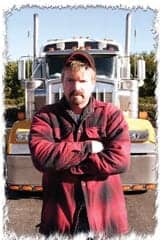
Home sleep testing, AASM scoring criteria, and CMS reimbursement
By Nic Butkov, RPSGT
The 2008 ruling by the Centers for Medicare and Medicaid Services (CMS) pertaining to the use of home sleep testing (HST) has spurred a flurry of entrepreneurial activity that potentially fosters overdiagnosis and overtreatment of obstructive sleep apnea (OSA). Whereas in the past, concerns were raised about limited access to sleep diagnostics, today there is equal concern that sleep testing has become oversimplified to the extent that patients are prescribed with unnecessary or inappropriate therapy.
One of the reasons for potential overdiagnosis is a one-dimensional scoring system that has been applied equally to polysomnography and HST. It is a simplified system that relies on signals derived from respiratory sensors and oximetry, without considering normal variants of sleep and wake physiology or the high probability of artifact. Overscoring and overdiagnosis are less likely to occur when HST is performed under the auspices of a full-service sleep center, staffed by experienced sleep professionals. However, HST holds little appeal for established sleep centers because the time spent in performing and scoring the studies conscientiously renders them unprofitable. Instead, HST largely appeals to businesses that function on low overhead and high volumes. High volumes can lead to dependence on automated scoring, which, in turn, can yield inflated respiratory disturbance indices. The end result is a business-driven “apnea mill” approach to diagnosing and treating sleep disorders with potentially unscrupulous and costly results.
The intent of this article is not to discredit HST technology (which in the right hands and properly managed is a useful tool), but to raise critical awareness regarding its use under current regulations. The overuse of HST raises issues not only in terms of reimbursement for inappropriate treatment, but also with regard to the credibility of sleep medicine.
BACKGROUND
HST is a term that has been loosely applied to a wide variety of recording methods for detecting sleep apnea. The term is misleading because most HST devices do not actually record sleep, but are limited to three or four channels of respiratory data and oximetry. Limited-channel HST devices (defined as type III and IV) are produced by a number of manufacturers including makers of positive airway pressure (PAP) equipment.
HST technology is not new. Limited-channel type III and IV devices have been available since the 1980s, for the most part employing the same type of respiratory sensors as used in polysomnography, but without physiological sleep measures. The use of these devices has been a topic of debate for the past 25 years, but until recently, neither the CMS nor the American Academy of Sleep Medicine (AASM) approved them for diagnostic purposes. The 2008 decision by CMS to modify its National Coverage Determination (NCD) pertaining to the coverage of continuous positive airway pressure (CPAP) resulted from a challenge to the policy raised by the American Academy of Otolaryngology-Head and Neck Surgery, claiming lack of patient accessibility to sleep diagnostics. To accommodate the inclusion of limited-channel HST, CMS changed its reimbursement policy by deemphasizing diagnostic accuracy in lieu of strategies designed to predict favorable treatment outcomes. This included the stipulation of “demonstrable benefit” within a 12-week trial of CPAP following diagnosis.1
PROBLEMS WITH THE CURRENT CMS POLICY

Nic Butkov, RPSGT
There are several problems with current CMS policy. First, CMS has applied the same diagnostic criteria for reimbursement as previously used for polysomnography, ie, 15 or more apneas or hypopneas per hour; or five or more apneas or hypopneas per hour in the context of clinical symptoms. To accommodate the lack of sleep measures by HST, CMS redefined the respiratory disturbance index (RDI) as the average number of apneas or hypopneas per hour of recording, as opposed to the apnea/hypopnea index (AHI), which represents the average number of apneas or hypopneas per hour of sleep. Under these circumstances, a patient could arguably hold their breath five times per hour while awake and qualify for treatment. However, a more likely scenario for overdiagnosis is simply a restless sleeper who accumulates “apneas and hypopneas” during periods of wakefulness and transitional sleep—enough to satisfy reimbursement requirements.
The second problem is that HST is now routinely performed in a manner that is contrary to the original intent of the policy, which specifically calls for a person sufficiently trained in sleep medicine in the context of comprehensive clinical evaluation and follow-up. As noted, seasoned sleep specialists have been reluctant to embrace HST, partly because of economic considerations, and also because the tests often yield inadequate or ambiguous results. Instead, a typical model for HST is a privately owned business that markets its services to primary care practitioners, sets patients up with the recording device, uses the HST automated scoring software to generate a report, and then sends the report to an independent reading physician, who does not necessarily have any preexisting connection to the patient’s care or anticipated follow-up.
The third problem with HST is that every system on the market uses its own array of sensors, its own processing algorithms, and its own scoring formulas. Not surprisingly, each system can be expected to yield different results. However, when scoring criteria are sufficiently simplified, results become more consistent. This has become the basis for “validating” automated scores, or for comparing HST with polysomnography. It can certainly be argued that any method will produce similar results as long as the same scoring methods are applied. Using this approach, the scoring process, whether visual or automated, becomes a perfunctory exercise that is reproducible, but does not necessarily reflect clinical reality. But instead of reexamining this foundation, efforts are now under way to accommodate all the different types of HST devices currently on the market. According to a recent paper in the AASM’s Journal of Clinical Sleep Medicine (JCSM), it appears that HST does not need to follow the AASM-mandated technical requirements for polysomnography, but that almost any combination of respiratory sensors, short of using a thermistor alone, will yield “positive results.”2
The fourth problem with the current HST policy is that treatment outcomes have now become largely equated to treatment adherence. Patients who even barely meet the CMS criteria are automatically prescribed CPAP without being presented with treatment alternatives, which in some cases could be a few simple lifestyle changes. Instead, the treatment is deemed “successful” as long as the patient adheres to it. By analogy, it is similar to using a home cholesterol screen to indiscriminately prescribe medications to all persons whose numbers are even slightly elevated.
HOME SLEEP TESTING AND THE AASM
Until the 2008 CMS ruling, the AASM opposed the use of unattended HST for diagnostic purposes. The 2005 Practice Parameter for the Indication for Polysomnography and Related Procedures does not support the use of Type III or IV HST devices in an unattended setting.3 However, in late 2007, when it became apparent that CMS was going to proceed with its decision, the AASM reversed its position and published a set of clinical guidelines for HST, which stated that their newly published respiratory scoring rules (which were actually intended for in-laboratory polysomnography) should be equally applied to HST.4
More recently, the AASM has announced its new Standards for Accreditation of Out of Center Sleep Testing (OCST) in Adult Patients, and has required that all AASM-accredited sleep centers that wish to perform HST obtain the OCST status. The move is incongruous, because on one hand it implies that accredited sleep centers (which already perform complex testing) are incapable of conducting HST without additional credentialing; while on the other, it opens the door to anyone who wishes to perform HST, as long as they meet some basic managerial requirements and as long as they align themselves with a board-certified sleep specialist who acts as medical director and reads the studies.
The policy is written in such a way that any physician, nurse practitioner, or physician assistant can manage the patient, whereas the OCST medical director only needs to be responsible for overseeing the technical aspects of the testing services. With regard to scoring, the policy is sufficiently loose, stating that scoring can be performed by “sleep technicians, sleep technicians with the CPSGT certification or other approved certifications, sleep technologists with the ABSM or RPSGT credential, respiratory therapists with the sleep disorders specialist certification, or neurodiagnostic technicians with additional sleep certification.” The policy does not directly address the issue of automated scoring, but simply states that “if used, computer-assisted scoring of OCST recordings must be reviewed and edited for accuracy by a board certified physician.”
In light of the AASM’s own previous assertions that there are no shortages of sleep services in the United States, and no indications that HST is more cost-effective than polysomnography (especially taking into account technical failures as well as false-negative and false-positive results), there is limited reason to sanction this type of testing model. OCST accreditation serves as another step toward funneling all sleep-related enterprises under the AASM jurisdiction, but does little to promote diagnostic accuracy or effective patient care.
CAUTIONARY SUMMARY REGARDING HOME SLEEP TESTING
The idea of home sleep testing holds appeal for many, because it implies lower costs and the capability of performing a study in the comfort of one’s own home. However, the main drawbacks to limited-channel HST are lack of physiological sleep measures, coupled with oversimplified scoring rules that rely chiefly on respiratory sensor technology. Under these circumstances, HST reports have the potential to produce over-stated respiratory disturbance indices—due to the presence of normal respiratory variants associated with sleep/wake physiology and artifacts, which can be mistakenly tabulated as clinically significant events. Common examples of normal variants include sighing, yawning, breath-holding while changing body position, breathing irregularities that accompany sleep onset and arousals from sleep, and respiratory fluctuations that occur normally during REM sleep. Artifacts can be caused by body movements, sensor displacement, postural changes, or airflow signal alterations that occur with mouth breathing or having one’s face pressed against a pillow. None of these factors are taken into consideration by current AASM respiratory event scoring criteria, and none of them are addressed by the diagnostic policies set forth by the CMS. The problem is compounded by increased reliance on automation, which is becoming the norm in the context of current HST use.
There is no doubt that HST can play a useful role as an adjunct to comprehensive sleep testing under the auspices of full-service sleep disorder centers. HST is intended to improve access and increase case finding in the community. However, careful assessment needs to be made regarding the benefits of HST in terms of quality of patient care and reduction of health care costs under current CMS and AASM policies.
Nic Butkov, RPSGT, is education coordinator at the Rogue Valley Sleep Center, CEO of Synapse Media Inc, and director of the School of Clinical Polysomnography in Medford, Ore. The opinions and views presented in the article are those of the author and do not necessarily coincide with the point of view of Sleep Review.
REFERENCES
- Chediak AD. Why CMS approved home sleep testing for CPAP coverage. J Clin Sleep Med. 2008;4:16-18.
- Collop NA, Tracy SL, Kapur V, et al. Obstructive sleep apnea devices for out-of-center (OOC) testing: technology evaluation. J Clin Sleep Med. 2011;7:531-548.
- Kushida CA, Littner MR, Morgenthaler T, et al. Practice parameters for the indications for polysomnography and related procedures: an update for 2005. Sleep. 2005;28:499-521.
- Collop NA, Anderson WM, Boehlecke B, et al. Clinical guidelines for the use of unattended portable monitors in the diagnosis of obstructive sleep apnea in adult patients. J Clin Sleep Med. 2007;15:737-747.
Home Sleep Testing and Medication Effects on Sleep
Neither the CMS nor the AASM has addressed the issue of medication effects on sleep and the probability of confounding test results stemming from their use. The overuse of certain medications can lead to symptoms of fatigue and sleepiness, which, in recent times, are often mistakenly attributed to OSA. Many of these medications cause changes in electroencephalogram (EEG) patterns, as well as increase the incidence of arousal, body movement, and periods of wakefulness. When sleep quality is poor, the likelihood of HST inaccuracy increases due to motion artifact, sensor displacement, and breathing irregularities associated with wakefulness and transitional sleep.
The author is aware of multiple instances when overmedicated patients were mistakenly diagnosed with OSA, including a recent case of a healthy 24-year-old woman prescribed with paroxetine for situational depression who was complaining of daytime fatigue. This patient was prepared to undergo mandibular surgery as a result of a subsequent OSA misdiagnosis. A careful examination of her polysomnogram revealed that she did not have OSA, but that instead she had significant medication effect with increased motor activity, spontaneous arousals, and periods of wakefulness that were misinterpreted as OSA. Using a proper test, read by an experienced practitioner, prevented this patient from seeking unnecessary treatment and helped identify the real source of her sleep complaint. —N.B.





